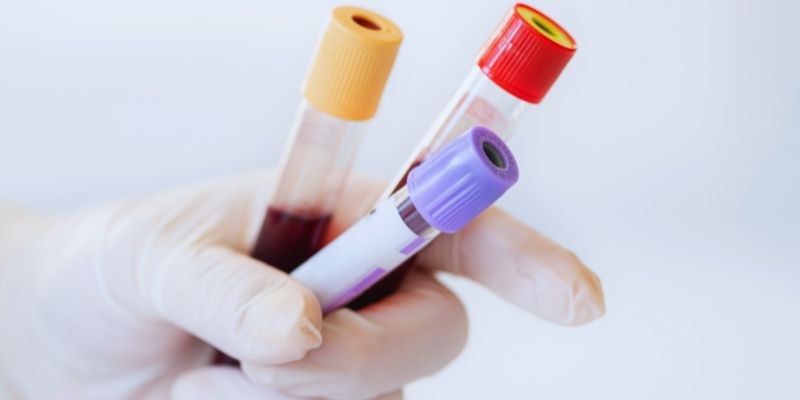When Is The Right Time To Biopsy: Everything You Need To Know
Diagnosing many medical disorders, including cancer, infections, and autoimmune diseases, depends on biopsies. They thoroughly understand underlying medical problems through tissue or cell collecting for study. Knowing when a biopsy is required helps one to make quick judgments and reduce uncertainty. Doctors advise biopsies depending on symptoms, imaging findings, or unresolved medical questions.
However, the particular condition and medical advice will determine whether or not to proceed. Understanding the indicators, varieties, and techniques will assist you in being ready and confident. In the guide, we discuss when one should think about a biopsy. You will also learn about the typical forms and their applications. Clear information guarantees your ability to talk to your doctor about choices. Let's explore the main features of biopsies to help you appreciate their relevance and timing.

When a Biopsy Is Necessary?
When clinicians believe aberrant alterations in tissues or cells exist, a biopsy is usually advised. Conditions including cancer, infections, or inflammation can all be diagnosed with this surgery. Typical triggers include irregularity in imaging studies, recurrent lumps, or unexplained symptoms. X-rays or MRIs are among the imaging techniques that could expose odd growths. A biopsy guides one toward either a benign or malignant diagnosis. Likewise, ongoing symptoms unresponsive to therapy could require more investigation using tissue samples. These surgeries give clarity and direction for efficient treatment programs.
Early diagnosis of major diseases depends on timely biopsies, enhancing the possible results. Not every symptom, meanwhile, calls for a biopsy. Before proposing the surgery, doctors evaluate your medical history, imaging results, and degree of symptoms. You should talk to your doctor if you have questions or unusual symptoms. Personalized guidance and honest communication guarantee that the biopsy is performed just when required. This cautious approach reduces hazards and gives accurate diagnosis top priority.
Types of Biopsies and Their Uses
The suspected illness and the location of the aberrant tissue determine the method of biopsies used. Every kind has particular uses and benefits for a correct diagnosis.
- Needle Biopsy: Minimally invasive treatments called needle biopsies involve passing a thin needle into the afflicted area to remove a tiny tissue sample. They are frequently employed to examine lumps in easily accessible places, such as the thyroid or the breast. This approach has a shorter recovery period and produces fast effects. It is a recommended choice in cases when less intrusive solutions are enough for diagnosis.
- Skin Biopsy: Conditions impacting the skin, including rashes, odd moles, or lesions, are diagnosed using skin biopsies. This approach removes and studies a tiny portion of the skin under a microscope. It is very good at spotting inflammatory skin diseases, infections, or skin cancer. The operation is easy, and it is usually carried out in a clinic.
- Surgical Biopsy: Deeper or more complicated anomalies could call for surgical biopsies. Usually, under anesthetic, this technique entails taking a bigger tissue sample. Diagnosing diseases connected to internal organs, such as lung or liver tumors, depends on it.
- Endoscopic Biopsy: Endoscopic biopsies gather tissue samples from inside organs like the lungs or gastrointestinal system using a flexible tube fitted with a camera. This technique offers a deeper look at inside tissues and fewer invasions than surgery.

Symptoms That May Indicate a Biopsy
Some signs could point to needing a biopsy to find or exclude underlying medical diseases. These include:
- Persistent Lumps: Lumps that stay the same or keep developing over time call for medical examination. These could be indicators of benign diseases like cysts or major problems like malignancies. A biopsy gives comprehensive information to verify whether the lump calls for therapy or is benign. The timeliness of diagnosis and efficient management depends on early investigation of recurring lumps.
- Unexplained Bleeding: Regular or chronic bleeding from any bodily part, including the digestive tract, gums, can point to underlying medical problems. Often, the reason for the bleeding, which might be from infections, ulcers, or even cancer, is tissue sampling by a biopsy.
- Chronic Pain: Weeks of pain that doesn't get better with traditional treatment could point to more serious issues. Often advised for chronic pain in the belly, joints, or chest are biopsies. They enable the detection of infections, inflammation, or aberrant growth.
- Changes in Skin Lesions: Moles, rashes, and skin patches varying in size, form, color, or texture can indicate skin cancer. A biopsy can help define whether these developments call for more intervention or are benign. Early evaluation guarantees improved results and fast treatment.
When to Consult a Doctor?
Early identification of possible medical problems depends on knowing when to see a doctor. Although not all symptoms are severe, some indicate quick care should be paid. Examined should be persistent lumps or growths that neither disappear nor grow. Unexplained or regular bleeding from the digestive tract, gums, or other sites may point to underlying problems. Often, these symptoms call for more research to find the source, sometimes via a biopsy. Weeks of persistent pain, especially in certain regions like the belly, chest, or joints, should not be overlooked.
It can indicate disorders like inflammation, infections, or aberrant development. Any changes in skin lesions, such as moles or rashes that develop, alter color, or bleed, also call for medical examination. See your doctor if you have persistent or worsening inexplicable symptoms over time. Talking about your health background and issues can enable your doctor to determine whether more tests, including a biopsy, are required. Early consultation improves treatment results and results in a prompt diagnosis. Maintaining long-term health depends on regular visits to your doctor and honest discussions with him.
Conclusion:
Biopsies are essential tools for diagnosing a wide range of medical conditions, from cancer to infections. Understanding when a biopsy is necessary empowers individuals to take proactive steps toward their health. By recognizing symptoms like persistent lumps, unexplained bleeding, chronic pain, or changes in skin lesions, timely medical consultation becomes possible. Discussing concerns with a doctor ensures personalized guidance and informed decision-making. While not every symptom requires a biopsy, its role in providing clarity and guiding treatment is invaluable. Early identification and action can greatly enhance results, so biopsies are important in contemporary medical procedures. Stay informed and proactive.











